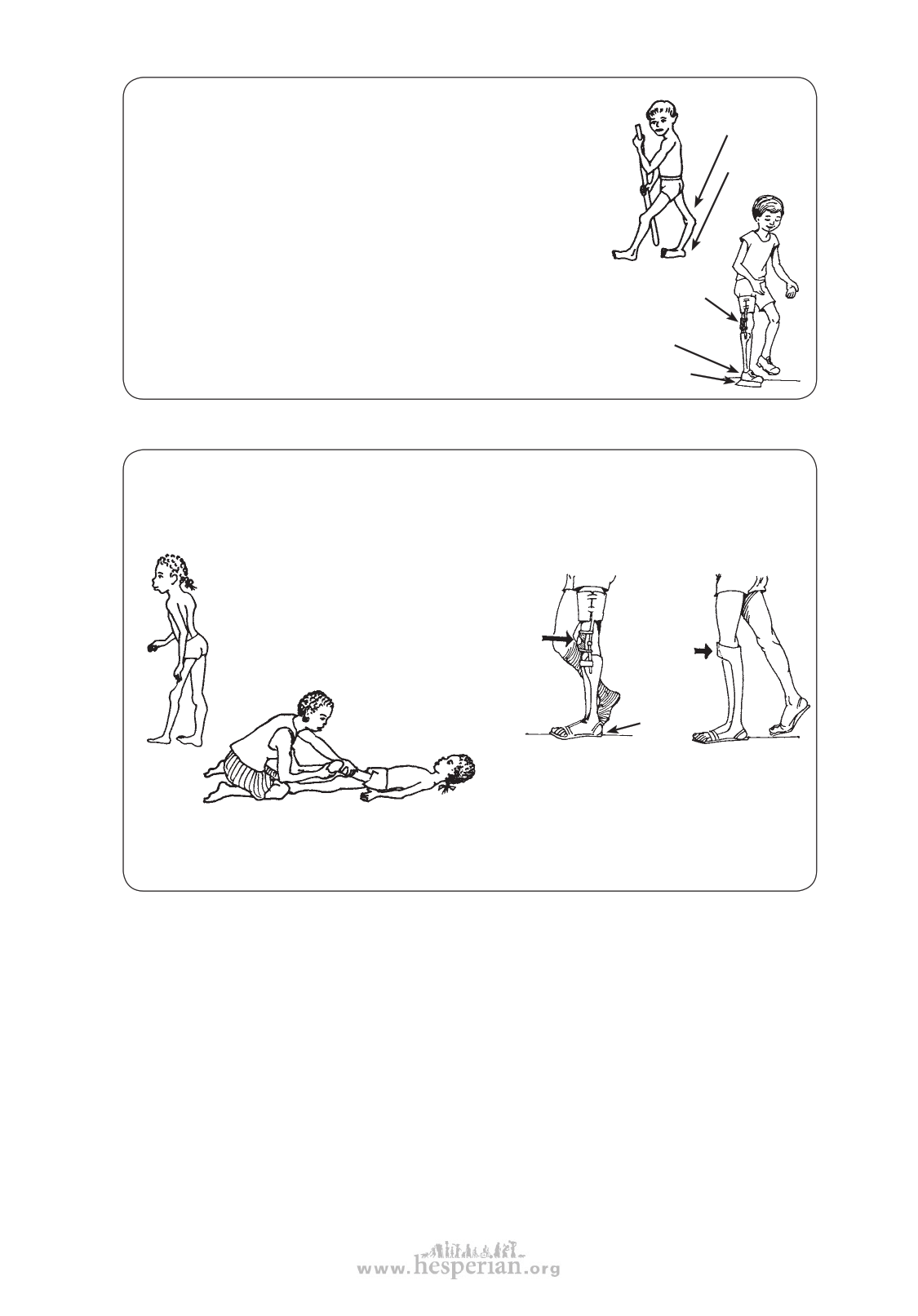
polio 67
Manuel walks with the help of a stick. He appears to have
paralysis mainly in his right leg and foot. Because of weak thigh
muscles, he ‘locks’ his knee backward in order to bear weight on
it. This ‘back-kneeing’ has become more and more extreme as
the cords behind the knee stretch. The foot is very unstable and
flops to one side. The weaker leg looks somewhat shorter—and
for walking is much shorter because of the bent-back knee and
bent-over foot.
He might be able to walk without the stick if he uses a
below-knee brace to stabilize his foot. (See p. 550.)
But the back-knee would become worse and worse until he
could not walk. So probably he should have a long-leg brace.
The brace might allow his knee to bend backward just a little
for stability— so that no knee lock is needed.
pad holds
knee forward
firm ankle
support
raised sole
back-knee
floppy
foot
Afia leans forward and pushes her weak left
thigh with her hand when she walks. Her left
knee cannot quite straighten. Her weak leg
looks a little shorter than the other.
Or she may need
an above-knee
brace with a strap
to pull the knee
back.
Or she may only
need a below-knee
brace that helps
push her knee back.
Exercises to get her knee
straighter or so it can bend
very slightly backward may be
all that is needed for Afia to
walk without using her hand.
Pad
pulls
knee
back
Brace
pushes
knee
back.
raised
sole
The brace bends the foot down just a little,
so that by bearing weight on toes (rather
than heel) her knee is pushed back.
To get a better idea about which of the three solutions may work best for Afia, you will
need to do a careful physical examination, testing range of motion and muscle strength of
the hip, knee, and ankle joints.
Step. 2: This is the physical examination. It should usually include:
1. Range-of-motion testing, especially where you think there might be contractures.
(See “Physical Examination,” p. 27 to 29, and “Contractures,” p. 79 and 80.)
2. Muscle testing, especially of muscles that you think may be weak. Also test muscles
that need to be strong to make up for weak ones (such as arm and shoulder strength
for crutch use). (See p. 27 and p. 30 to 33.)
3. Check for deformities: contractures; dislocations (hip, knee, foot, shoulder,
elbow); difference in leg length; tilt of hips; and curve or abnormal shape of the
back. (See p. 34.)
disabled village children